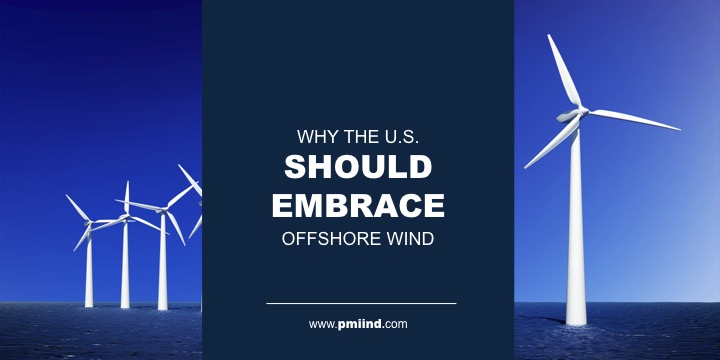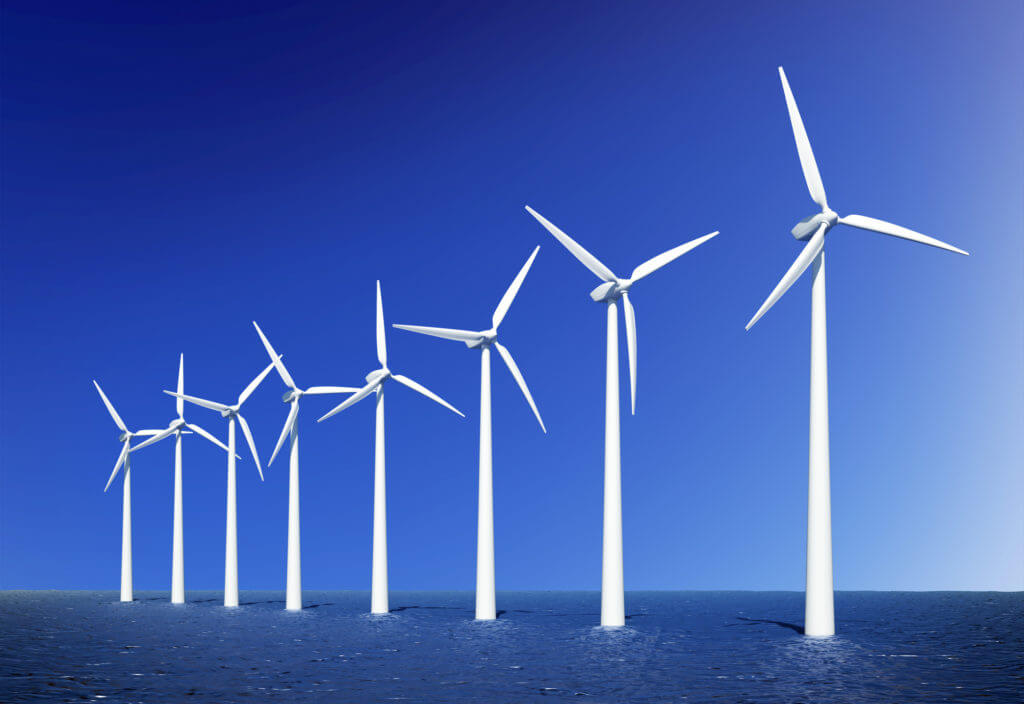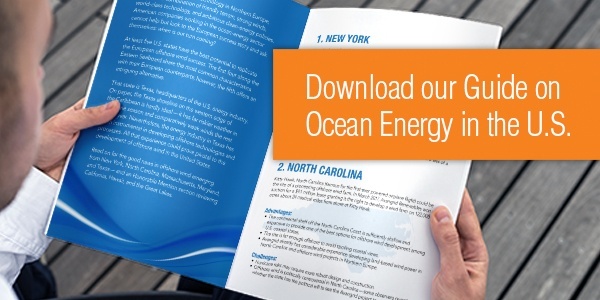The first U.S. offshore wind farm is expected to go online by the end of 2016, ushering in what could be a new era of renewable energy in the United States.
This is welcome news in a nation where land-based wind power has exploded over the past two decades, installing nearly 50,000 wind turbines that provide clean energy across the continent. Can the same spirit of innovation that made U.S. land-based wind power a world leader be applied to offshore power?
We’d like to think so, but, admittedly, there is a long way to go. The new Block Island Wind Farm is barely a blip on the nation’s energy map — powering just 17,000 households in a nation of 325 million people.
Completed in August at a cost of $290 million, the Block Island Wind Farm consists of five turbines towering over the waters of the Atlantic Coast south of Rhode Island. It might not sound like much in an age where thousands of offshore wind turbines pump carbon-free electricity to Germany, the U.K. and other European nations.
But it’s difficult to exaggerate the importance of the U.S. finally dipping its toes in the water, so to speak, of offshore wind. An abundance of caution on American shores had thwarted every previous offshore wind project. Now that offshore wind technology is mature thanks to a couple decades of European development, the U.S. is poised to reap the benefits of potentially cheaper offshore wind power.
This helps explain why several states along the Eastern Seaboard are embracing offshore wind power:
- The governor of Massachusetts approved a program in August allowing up to 1,600 megawatts of offshore wind projects in the next decade.
- New York approved a plan in August that says renewable power sources (wind, solar, etc.) must account for half of the state’s energy output in 2030. In September, the state released a blueprint for an offshore wind master plan to be completed in 2017.
- At the University of Maine, researchers are working with federal grants from the Department of Energy to develop prototypes of floating wind-farm platforms that can overcome many of the challenges associated with fixed offshore wind turbines. A French defense firm that’s moving into the renewables sector also has joined the project.
Projects on the drawing boards could add nearly 5 gigawatts of offshore wind power in the United States — a mere fraction of the estimated 4,200 gigawatts of energy that could be generated in the domestic waters of the United States.
Any offshore wind projects will have to overcome substantial regulatory and financial hurdles before any electricity starts streaming back to the mainland. But it’s worth the effort.
Why offshore wind is crucial to the U.S. energy equation
Offshore wind technology is more expensive to install and maintain than its land-based counterparts. But ocean breezes are stronger and more consistent than the wind passing over land, which creates the potential for much more efficient wind-energy operations installed offshore.
In effect we can conceivably pull more power from fewer turbines if offshore wind technology matures. Installing and maintaining these towers will require substantial expertise, which could produce a lot of steady jobs for coastal communities.
Meanwhile, the U.S. fracking boom that has done so much for the nature’s energy posture — lowering gas and oil costs and reducing the dominance of OPEC — remains politically controversial. If the public tide were to turn against fracking, we could see renewed pressure to tap green-energy sources like offshore wind.
Embracing the power of our oceans
At PMI, we’re strong believers in the potential of marine energy technologies because we’ve been providing rugged cable accessories to offshore industries for decades. To be viable, offshore wind farms must be able to cope with ever-present threats to subsea power cables that transmit electricity back to the mainland. Our cable terminations, cable protection and splices are built to withstand the worst our oceans can deal out, so naturally we’re embracing the potential of offshore wind.
The oceans alone won’t fix all of America’s energy problems, of course. But they should be part of the solution.
Related articles:




